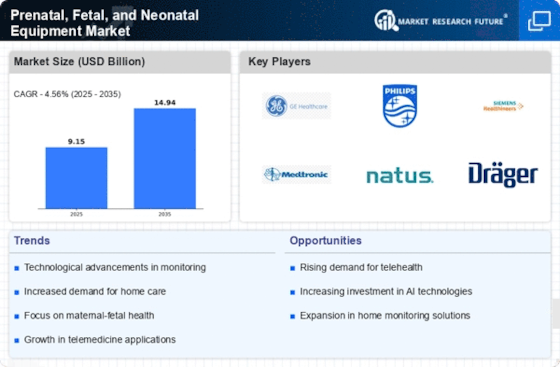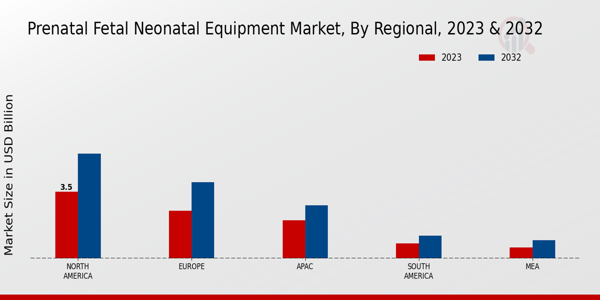Rising Birth Rates
The Prenatal, Fetal, and Neonatal Equipment Market is experiencing a notable increase in demand due to rising birth rates in various regions. According to recent statistics, certain areas have reported a birth rate increase of approximately 1.5% annually. This trend necessitates enhanced prenatal and neonatal care, driving the need for advanced equipment. As healthcare providers strive to accommodate the growing number of births, investments in innovative technologies and equipment become essential. This surge in demand for prenatal and neonatal services is likely to propel the market forward, as hospitals and clinics seek to improve maternal and infant health outcomes.
Technological Innovations
Technological innovations play a pivotal role in shaping the Prenatal, Fetal, and Neonatal Equipment Market. The advent of advanced imaging technologies, such as 3D and 4D ultrasound, has revolutionized prenatal diagnostics, allowing for more accurate assessments of fetal health. Additionally, the integration of artificial intelligence in monitoring systems enhances the ability to detect potential complications early. As healthcare facilities adopt these cutting-edge technologies, the demand for sophisticated prenatal and neonatal equipment is expected to rise. This trend not only improves patient outcomes but also positions healthcare providers at the forefront of modern medical practices.
Government Initiatives and Funding
Government initiatives and funding aimed at improving maternal and child health significantly impact the Prenatal, Fetal, and Neonatal Equipment Market. Various governments are implementing policies to enhance healthcare access and affordability, particularly for prenatal and neonatal services. Increased funding for maternal health programs facilitates the procurement of advanced medical equipment, ensuring that healthcare facilities can provide high-quality care. This support from governmental bodies is likely to stimulate market growth, as it encourages the adoption of innovative technologies and practices in prenatal and neonatal care.
Increased Awareness of Maternal Health
There is a growing awareness regarding maternal health, which significantly influences the Prenatal, Fetal, and Neonatal Equipment Market. Educational campaigns and initiatives aimed at promoting maternal health have led to a heightened understanding of the importance of prenatal care. This awareness encourages expectant mothers to seek regular check-ups and utilize advanced medical equipment for monitoring fetal development. Consequently, healthcare providers are compelled to invest in state-of-the-art prenatal and neonatal equipment to meet the rising expectations of patients. The emphasis on maternal health is likely to sustain market growth as more individuals prioritize comprehensive prenatal care.
Growing Demand for Home Healthcare Solutions
The demand for home healthcare solutions is on the rise, influencing the Prenatal, Fetal, and Neonatal Equipment Market. As more families seek to manage prenatal and neonatal care at home, there is an increasing need for portable and user-friendly medical equipment. This shift towards home-based care is driven by the desire for convenience and personalized healthcare experiences. Consequently, manufacturers are focusing on developing equipment that is suitable for home use, such as portable fetal monitors and telehealth solutions. This trend is likely to reshape the market landscape, as it aligns with the evolving preferences of patients and healthcare providers.


















Leave a Comment